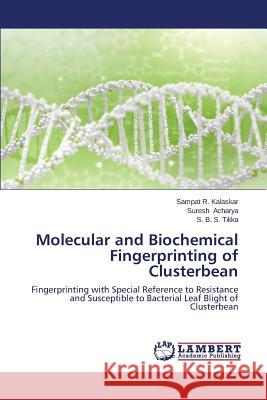Molecular and Biochemical Fingerprinting of Clusterbean » książka
Molecular and Biochemical Fingerprinting of Clusterbean
ISBN-13: 9783659593703 / Angielski / Miękka / 2014 / 132 str.
Molecular and biochemical fingerprinting used to identification of superior genotypes are the basic objectives of any crop improvement program. The recently developed molecular markers and isoenzymes assay has opened up new visits for the assessment of fingerprinting among genotypes at molecular and biochemical level. In the present investigation, one multi loci molecular markers viz. RAPD (19 Primers), one single locus molecular markers viz. SSR (19 Primers) and three isoenzyme assay viz. PO, PPO and PAL were used to assess the fingerprinting among 12 genotypes of clusterbean, which includes six resistance and six susceptible to bacterial leaf blight genotypes. Fingerprinting analysis was done with the help of statistical analysis such as marker index, polymorphism information content, dendogram and pi-chart. The present study clearly elucidated the RAPD, SSR and isoenzyme assay could be used as a good tool for detecting fingerprinting and can be precisely used for grouping and selection of diverse parents. From the present study like GG-2, HG-75 and HG-365 and GAUG-0522 may be utilized for breeding good genotypes with high yield and resistance to bacterial blight in clusterbean.











